
Getting to Antarctica is not simply transportation — it’s the first chapter of your story. How you choose to arrive shapes the pace, the texture, and even the mood of your journey. Each route offers its own kind of drama, from the slow, anticipatory crossing of the Drake Passage to the almost surreal precision of landing on a runway carved from blue ice in the deep field.
For some, the adventure begins the moment the ship leaves the sheltered waters of Ushuaia. The Drake Passage — that legendary stretch between South America and the Antarctic Peninsula — is a test of patience, endurance, and sometimes, balance. On calm days, nicknamed the “Drake Lake,” the water is so smooth you can see the reflection of the clouds. On wilder crossings, the “Drake Shake” turns the ship into a living thing, creaking and rolling under your feet. Either way, the crossing builds anticipation.
Lectures on Shackleton and Amundsen fill your mind, and naturalists brief you on penguin behavior. And you relish quiet hours leaning against the rail, scanning the horizon for that first glint of ice.
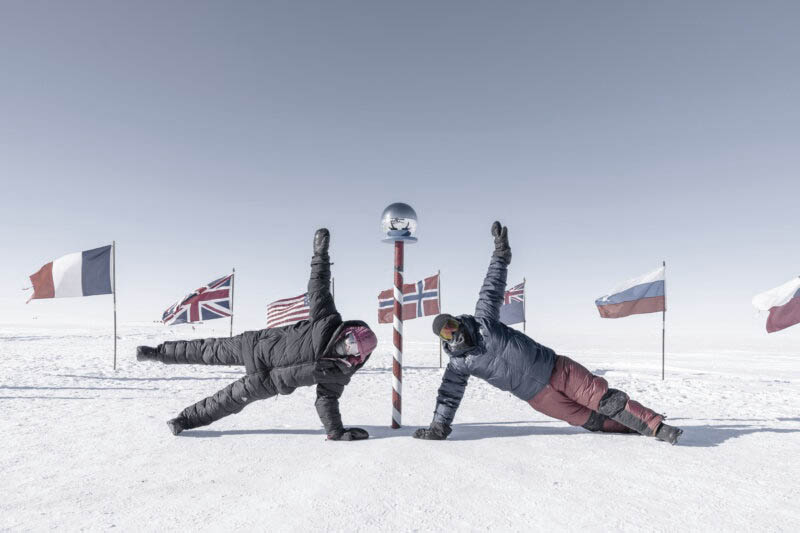
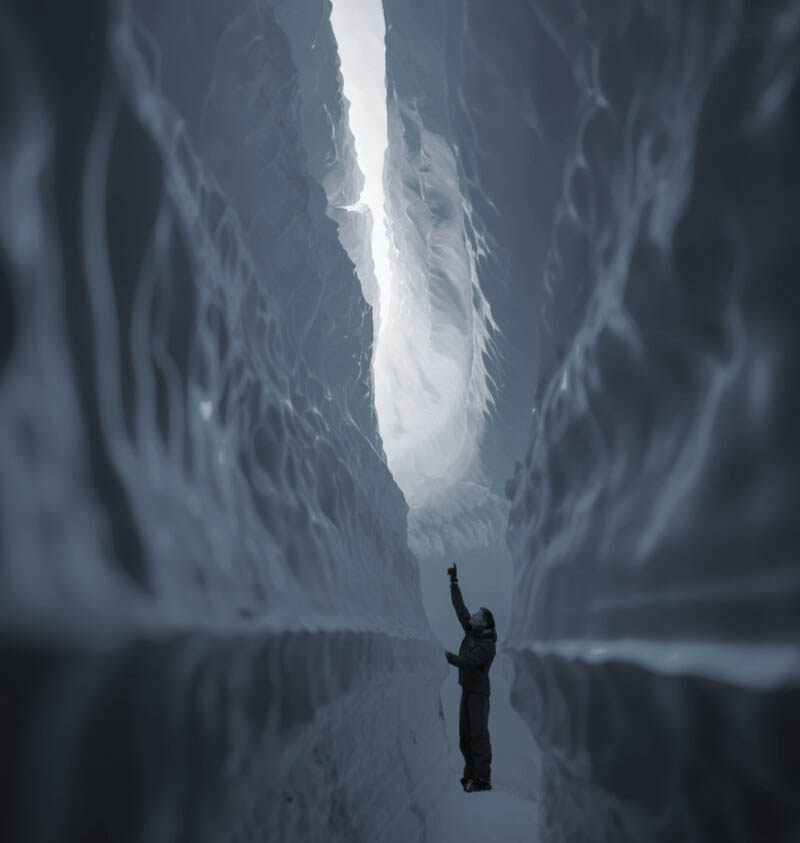
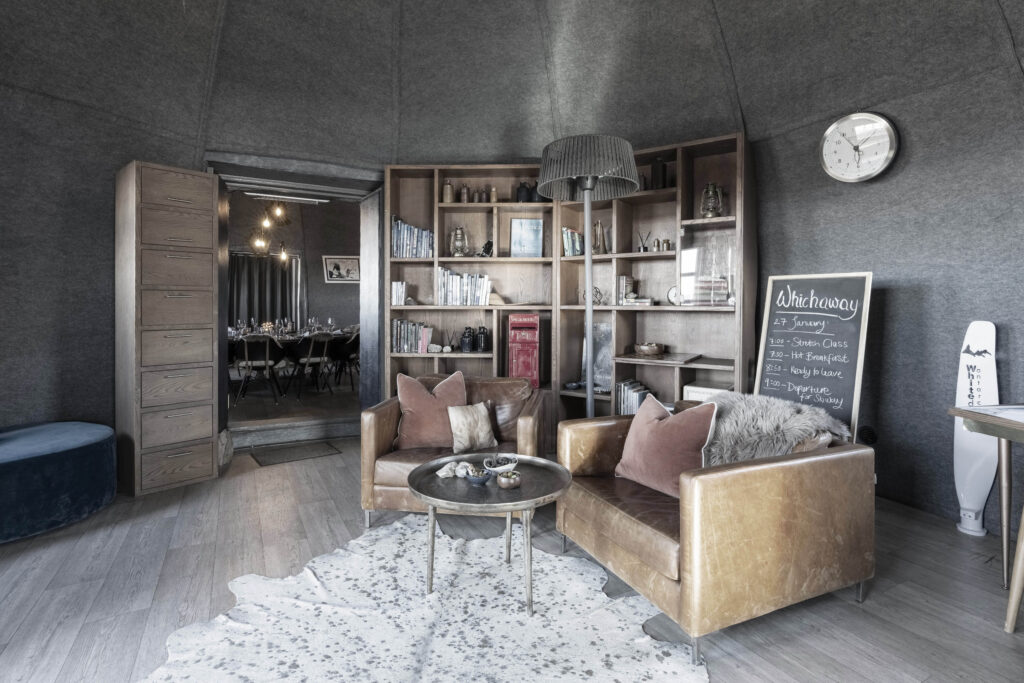
Traveler’s Moment — Sailing the Drake: You wake in the night to find the ship swaying gently, moonlight spilling across the water. Somewhere in the distance, a lone seabird wheels in the air, following the vessel like a silent escort. In the morning, you wrap your hands around a mug of coffee as the first iceberg comes into view — pale blue against the darker sea — and the deck buzzes with the thrill of arrival.
For others, time is the most incredible luxury, and you trade the idea of a two-day sea crossing for the speed and clarity of a flight. The fly-cruise option is just two hours from Punta Arenas or Puerto Williams to King George Island, a shortcut that avoids the uncertainty of the Drake. The plane lands on a gravel runway, the air sharp and clean, and almost immediately, you are boarding your expedition ship. The ice, the wildlife, the stillness — all of it begins the same day you arrive.
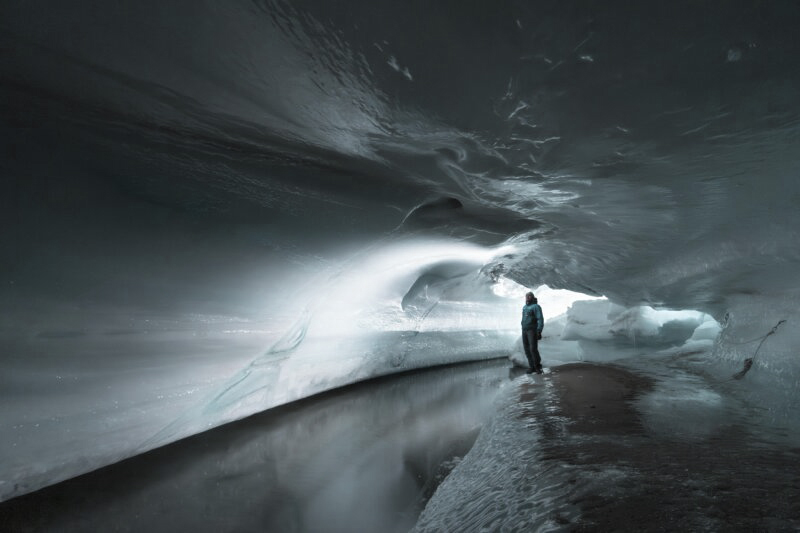
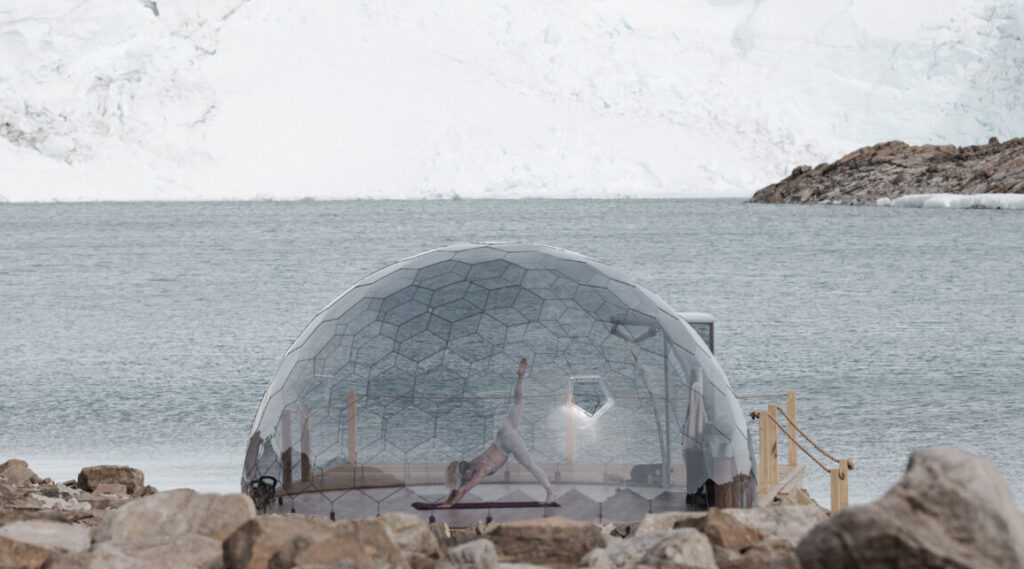
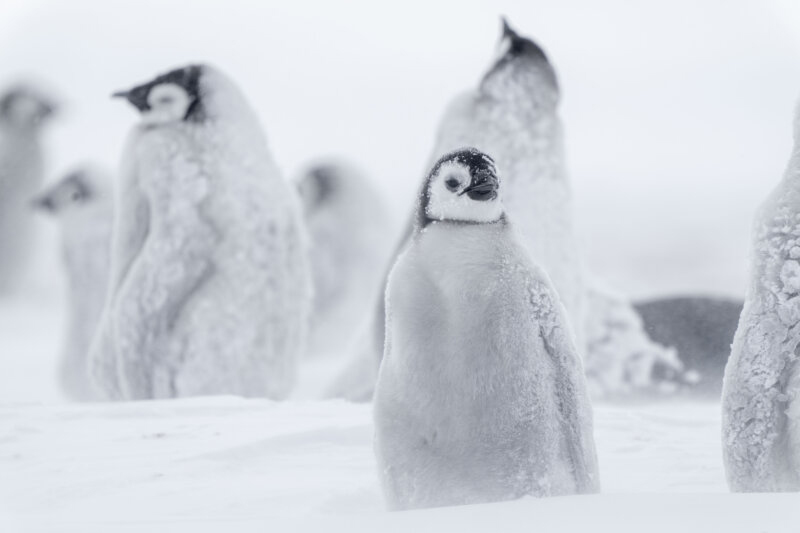
Traveler’s Moment — Flying Over the Drake: The plane banks gently, and through the small oval window, you catch your first glimpse of the Antarctic coast — a jagged white edge meeting the endless blue of the sea. Stepping onto the tarmac, you inhale air so cold it almost tastes metallic. The engines are quiet, replaced by a silence so pure you can hear the crunch of your boots on the packed earth. Within minutes, you are gliding away from shore, the world behind you receding into memory.
And then there is the rarest option of all — flying directly into Antarctica’s deep field. From Cape Town, a private aircraft carries you over thousands of miles of ocean to a runway made of blue ice, shimmering under 24 hours of sunlight.
There are no crowds here, no other ships in sight. Luxury pods stand in stark contrast to the wildness outside — warm, elegant, and impossibly remote. You spend your time visiting Emperor penguin colonies, climbing nunataks that rise like islands from the ice, or journeying all the way to the geographic South Pole. Every detail is deliberate, from the locally sourced menus to the fact that your hosts even peel potatoes before leaving South Africa, so nothing unnecessary is brought onto the continent.
Traveler’s Moment — Landing in the Deep Field: The plane door opens, and light floods in — not the golden light of morning or the dimness of dusk, but a full, unwavering brightness that feels eternal. The air is colder than you imagined, yet somehow invigorating. The only sounds are the wind and your own breath as you step onto the ice for the first time. The horizon stretches without end, broken only by the jagged silhouettes of distant peaks. You realize there is no road, no path — just the knowledge that wherever you go next, you’ll be among the few who have ever stood here.
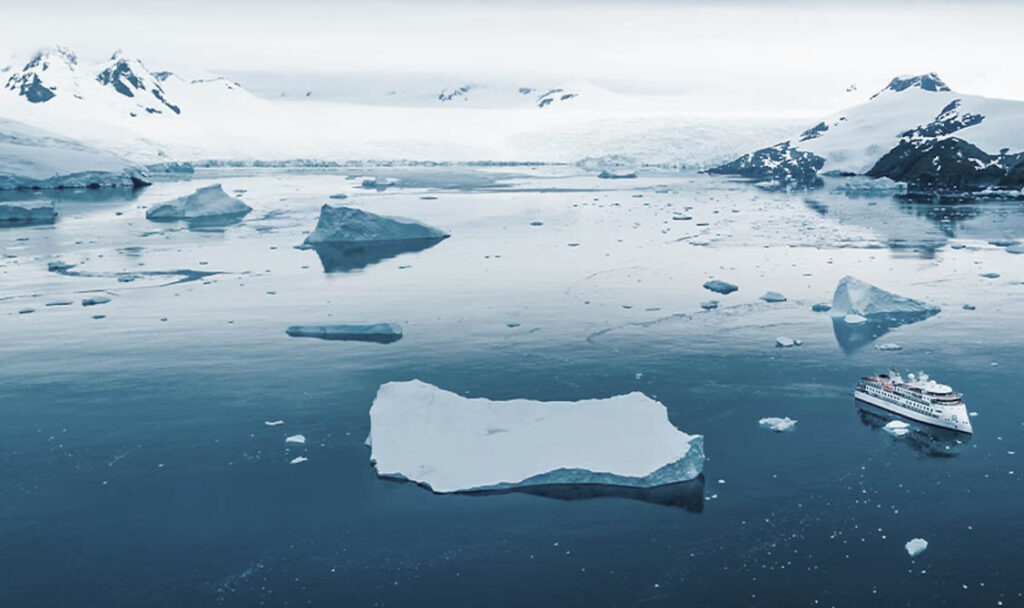
Each route to Antarctica tells its own story. Sailing the Drake gives you time to prepare, to let the anticipation build like a slow crescendo. Flying drops you into the experience with precision and immediacy. Landing in the deep field offers a kind of solitude and exclusivity found nowhere else on earth. The choice is yours — and whichever you choose, it will be the opening scene of one of the most incredible journeys of your life.
Choosing Your Antarctic Operator
| Operator | Style & Signature Experiences | Why Choose Them | Verified Sustainability Notes |
| Lindblad / National Geographic | Small ships, National Geographic photographers, youth explorer programs, and a deep science focus. | Perfect for families and lifelong learners craving immersive, interpretive experiences. | Not B‑Corp; long-standing conservation ethos; IAATO member. |
| Aurora Expeditions | Active itineraries (kayak, ski, camp, snorkel, scuba), strong citizen‑science focus. | For energetic travelers and themed expeditions (e.g., women-only voyage). | Certified B Corporation™ as of early 2024, IAATO/AECO member; committed to group-size caps and biosecurity. |
| Silversea Expeditions | Ultra-luxury expedition cruising, stabilized ships, impeccable onboard service. | Luxury travelers who seek seamless experiences without sacrificing access or comfort. | Not listed as B-Corp certified. |
| Ponant Expeditions | French hospitality, Michelin chefs, and luxury icebreaker access to deep sites. | Culinary travelers looking for deep-dive exploration (e.g., Emperor penguins, Ross Ice Shelf). | No publicly stated B-Corp or carbon-neutral credentials. |
| Atlas Ocean Voyages | “Relaxed luxury,” small ships (~170), frequent landings, strong plant-based menu. | Health- and wellness-conscious travelers who value both comfort and active days ashore. | No evidence of B-Corp or equivalent sustainability certifications. |
| Antarctica 21 | Chilean-owned fly-cruise pioneer, 76-passenger ships, logistics managed in-house. | Time-sensitive travelers seeking to bypass the Drake Passage, with high-touch personalization. | CarbonNeutral® certified; pioneering use of e-fuels in Antarctic operations. |
| White Desert | Deep-field fly-in camps, Emperor penguins, South Pole access, ultra-luxury pods. | Ultra-HNW travelers seeking exclusivity, luxury, and frontier travel. | No B-Corp or carbon-neutral claims; strong “minimal impact” logistics (e.g., meticulous supply planning). |
- Aurora Expeditions’ B Corp status (and AECO/IAATO membership) is confirmed on their site. TravelPulse+8, and coverage by travel press TravelPulse.
- Silversea’s non-B Corp status confirmed via absence of certification in relevant industry listings, Audley Travel+8
- Antarctica 21’s CarbonNeutral® certification and e-fuel pilot project are detailed on their sustainability page, Latte Luxury News
- Aurora’s biosecurity measures and limited guest footprint were highlighted in news reporting Daily Telegraph.
